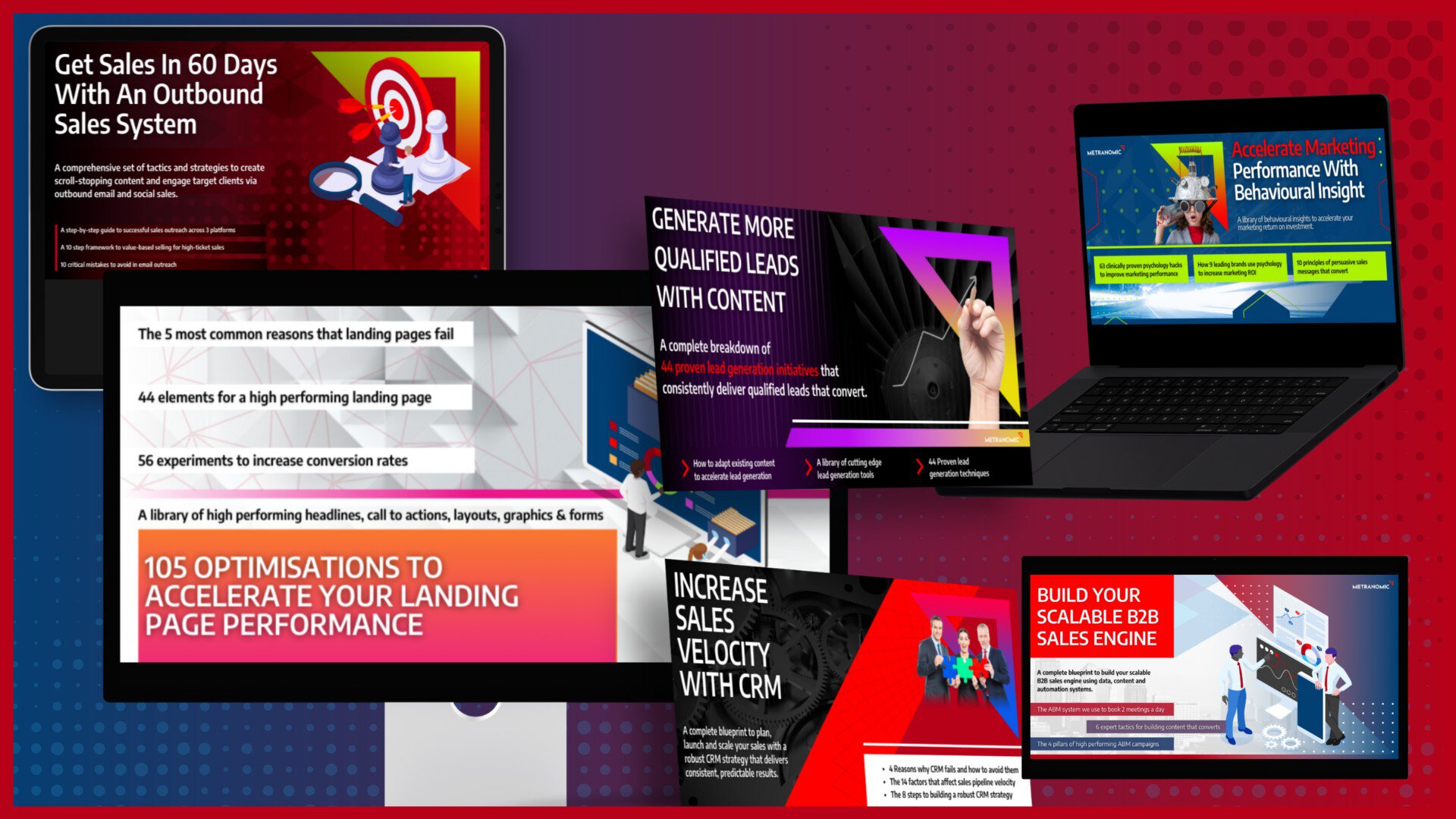Understanding your website visitors is the cornerstone of a successful online strategy. Without insight into who’s visiting, what they’re doing, and why they’re leaving, you’re essentially flying blind. Tracking website visitors is about uncovering critical data that can drive your marketing decisions, improve user experiences, and ultimately, boost conversions.
With tools like Google Analytics and session recording software at your disposal, you have the power to gain deep insights into visitor behaviour. But where do you start? This guide will walk you through everything you need to know about tracking website visitors, from the basics to advanced techniques, ensuring you’re equipped to make data-driven decisions that propel your business forward.
- Implementing website visitor tracking is essential for understanding user behaviour and optimising your digital strategy.
- Utilise tools like Google Analytics and heatmaps to gain valuable insights into your visitors’ actions and preferences.
- Analysing metrics such as bounce rate and session duration helps in making informed decisions to improve website performance.
- Ensure compliance with data privacy laws, including GDPR and CCPA, by obtaining user consent and managing data responsibly.
- Leverage tracking data to personalise user experiences, conduct A/B testing, and optimise content for better engagement.
What is Visitor Tracking?
Understanding Visitor Tracking
Visitor tracking refers to the method of monitoring the behaviour of visitors on a website, app, or other digital channels. This practice is typically executed through cookies and analytics software.
Cookies are small data files stored on a visitor’s device when they access a website or app. These cookies help track the visitor’s journey from page to page, capturing their actions and interactions on the site.
Analytics software plays a crucial role in gathering and analysing traffic data. It tracks the number of visitors, their sources, and the pages they visit. This data is invaluable for understanding your audience and tailoring your content to better meet their needs.
What Matters Most?
Focusing on user intent during visitor data analysis often leads to deeper insights and more informed decision-making. Integrating visitor tracking with customer journey mapping uncovers critical pain points, enabling more effective strategies. Additionally, combining qualitative insights from user feedback with quantitative data enriches overall understanding, allowing us to craft more targeted and impactful marketing initiatives that resonate with audiences.Get In Touch
Exploring Anonymous Visitor Tracking
Anonymous visitor tracking involves monitoring visitors to a website without identifying them personally. This approach helps businesses understand how visitors interact with their site, identify popular content, and determine traffic sources. By leveraging this data, businesses can make informed decisions regarding their marketing strategies and website design.
Several methods can be utilised for anonymous visitor tracking, with cookies being a common choice. These small data fragments stored on a user’s device track their movements as they navigate the web. Another method is the use of log files, which record every request made to a web server, capturing each visitor’s IP address and the pages they visit.
While anonymous visitor tracking offers significant benefits, it is essential to use this data responsibly. The information should never be used to personally identify users. Furthermore, businesses must ensure their tracking practices comply with all relevant laws and regulations.
Benefits of Website Visitor Tracking
Learn Key Details About Your Site Visitors
Understanding who visits your website is crucial for tailoring your marketing strategies. Website visitor tracking software, such as CANDDi, provides detailed insights beyond simple demographics. It reveals key information about individual site visitors, including their industry, location, frequency of visits, and duration of stay on your site.
For instance, CANDDi allows you to view comprehensive profiles of your visitors. These profiles include not only the visitor’s location and contact information but also their company profile. By knowing the industry your contacts belong to, your marketing team can more effectively target the most qualified B2B sales prospects.
Discover Your Traffic Sources
Identifying where your website traffic originates is fundamental to refining your marketing strategy. By comparing the number of leads generated from your email list to those coming from organic search or social media, you can gauge the effectiveness of different channels.
If a significant portion of your leads is derived from organic search, it indicates that your SEO strategy is successful. Conversely, if your email campaigns are underperforming, it might be necessary to adjust the frequency or content of your emails to better resonate with your audience.
Leads That Convert
It’s not enough to simply know where your leads are coming from; understanding which sources yield the highest conversion rates is vital. This information enables you to prioritise future marketing efforts.
For example, if a guest post on an industry website generates a substantial number of converting leads, it suggests that this audience aligns well with your target market. In such cases, further collaboration with the site could be highly beneficial.
Source: GeckoBoard
Measure the Effectiveness of Your Marketing Campaigns
To accurately assess your marketing campaigns’ success, it is essential to track their effectiveness against key performance indicators (KPIs). KPIs are measurable values that demonstrate how effectively you are achieving business objectives.
Some valuable KPIs include:
- Profit/cost ratio
- Average time needed for conversion
- Customer acquisition cost
- Customer retention rates
- Number of product defects
- Click-through rates on advertisements
See Which Pages Convert
A well-designed website does not guarantee conversions. By tracking visitor interactions, you can determine how long it takes for a lead to convert and which pages are most effective.
If a lead converts quickly, this could indicate a persuasive page with a seamless user experience. On the other hand, a delayed conversion might signal issues that need addressing. Visitor tracking helps identify trends and highlight the most effective pages and offers.
Learn Where to Optimise Your Site
Despite your best efforts to design an intuitive and user-friendly website, actual user behaviour might reveal otherwise. Tracking site visitors provides an objective view of whether your site is genuinely optimised.
If a significant number of visitors abandon a product page, there might be an issue with the product description, pricing, or visual presentation. Identifying these pain points allows you to make informed adjustments and enhance overall user experience.
![]()
What compliance steps do I need to follow for GDPR when tracking visitors?
Understanding the complexities of data privacy regulations is essential if your website tracks user behaviour or if you plan to implement website visitor tracking. The location of your website’s users directly influences which data protection laws apply to your collection and processing of personal data.
The General Data Protection Regulation (GDPR) and Website Tracking
For websites with users from the European Union (EU), compliance with the General Data Protection Regulation (GDPR) is non-negotiable, regardless of where your business is based. GDPR mandates strict guidelines for obtaining user consent and handling personal data.
To track user activity in compliance with GDPR, your website must adhere to three fundamental principles:
- Explicit Consent: You must obtain explicit consent from end-users before initiating any tracking. This ensures that users are fully aware and agree to the tracking of their online activities.
- Transparency and Information: You are required to provide comprehensive details about your tracking practices. Users need to understand what data is being collected, why it is collected, where it is sent, and with whom it is shared. This transparency is crucial for informed consent.
- Secure Storage and Documentation: Once consent is obtained, it must be securely documented and stored. This record of consent is vital for demonstrating compliance and must be renewed every 6 to 12 months in accordance with relevant national guidelines.
![]()
Obtaining and Documenting GDPR-Compliant Consent
Under GDPR, consent must be obtained in a manner that is both free and granular. This means that users should not be forced to consent as a condition for accessing services, and they must have the option to consent to some tracking activities while refusing others.
Your responsibility to inform users includes clearly communicating:
- Types of Personal Data Collected: Detailed descriptions of what personal data your website visitor tracking tools collect.
- Purpose of Data Collection: Explanation of why this data is collected and how it will be used.
- Data Sharing Practices: Information about where the data is sent and which third parties have access to it.
- Technical Details: Specifics about the website trackers employed, including their technical properties and how they function.
Users must be fully informed of all these details before they can provide valid consent. This information must be presented clearly and cannot be hidden in lengthy legal documents.
Once a user consents to website tracking on your domain, it is imperative to document this consent and securely store it. Compliance with GDPR also requires that this consent be periodically renewed, typically every 6 to 12 months.
Personal Data Under GDPR
The GDPR defines personal data broadly, covering information such as:
- Name, location, email address
- IP addresses, search history, browser history
- Purchase history, credit information, preferences and settings
- Inferences about sexual orientation, political convictions, religious beliefs
Ensuring that your website visitor tracking tools and website visitor tracking software are fully compliant with GDPR is not just a legal obligation but a vital component of building trust with your users.
The Different Types of Website Visitor Tracking
Understanding visitor behaviour on your website requires a multifaceted approach. No single report can provide a complete picture, which is why employing a variety of website visitor tracking methods is essential. These tools allow you to visualise and analyse how users interact with your site, providing critical insights to optimise user experience and improve conversion rates.
1. Behaviour Maps
Behaviour maps offer an aggregated view of visitor activity on a specific page. By overlaying a colour-coded map on your site, these tools highlight areas that receive the most attention from users. This tracking typically includes heat maps, click maps, and scroll maps:
- Heat maps show where users hover their mouse, with warmer colours (reds and oranges) indicating high activity areas, while cooler colours (blues) represent low engagement zones.
- Click maps reveal the exact spots on a page where users click most frequently.
- Scroll maps display how far down a page visitors scroll, highlighting where their interest wanes.
Behaviour maps are an intuitive and effective method to gain page-level insights, allowing you to understand what captures user attention and where there may be opportunities for improvement.
2. User Recordings
User recordings offer a more granular view by capturing the actions of individual users as they navigate your site. These recordings document every interaction from the moment a visitor lands on your website until they leave. By watching these sessions, you can observe the user’s experience in real-time, gaining an intimate understanding of their journey.
This method is particularly useful for identifying frustration points, such as a confusing form or a difficult-to-navigate page. While user recordings may not provide broad performance metrics, they are invaluable for pinpointing and addressing specific issues that could be hindering conversions.
3. User Journey Mapping
User journey mapping bridges the gap between behaviour maps and user recordings by illustrating the flow of visitors between different pages on your site. This tool tracks the various paths users take, from entry to exit, and provides quantitative data on how many visitors follow each path, where they drop off, and how many complete the desired action.
By visualising these journeys, you can evaluate the effectiveness of your conversion funnels, identify where users are dropping off, and design more efficient and engaging pathways. This approach enables you to optimise the user experience holistically, ensuring that every step of the journey is as smooth and intuitive as possible.
In practice, these website visitor tracking methods often work best in combination. You might begin by identifying a problematic page using a user journey map, then delve deeper with a behaviour map to see where users are losing interest, and finally, use user recordings to understand the nuances of individual user experiences.
Our Tactical Recommendations
From our experience, implementing advanced segmentation is crucial as it reveals hidden behaviours and opportunities within your audience. Utilising heatmaps to visualise user interactions uncovers unexpected behaviours that inform site optimisations. Moreover, leveraging Google Tag Manager simplifies tracking implementations, ensuring that our data collection is both efficient and accurate, ultimately leading to more actionable insights.Get In Touch
Which tools should I consider for effective website visitor tracking?
Understanding how visitors interact with your website is essential for optimising user experience and enhancing your marketing strategies. Website visitor tracking is made more accessible with the use of specialised website visitor tracking software and tools. These tools can be categorised into three distinct types, each designed to gather specific information about your visitors at different stages of their journey: before they visit your website, while they browse, and even after they leave. By mapping out the entire customer journey, these tools help you identify potential customers and refine your marketing efforts.
1. Behavioural Tracking: Behavioural tracking involves using software to gain detailed insights into how visitors engage with your website. This type of website visitor tracking software collects data on various user interactions, such as how far a user scrolls, what they click on, what they ignore, and average bounce rates.
By observing individual user sessions, you can analyse entire user paths and funnels. This data is often visualised through tools like website heatmaps, which help user experience researchers, design teams, and product managers optimise the user interface (UI) and user experience (UX) of a website or product. The insights gathered allow for data-driven decisions that can significantly improve the effectiveness of your site.
2. Analytic Visitor Tracking: Analytic visitor tracking focuses on gathering demographic data about your website’s visitors. This type of tracking software provides quantitative insights into the volume of traffic, traffic sources, bounce rates, conversion funnels, and conversion rates. It also tracks custom events and other critical metrics.
A well-known example of analytic visitor tracking software is Google Analytics. While it’s widely recognised, there are several other tools available that offer varying features. The data obtained from these tools enables you to identify and target the right audience with your marketing campaigns, ensuring that your efforts are aligned with your business goals.
3. Visitor Recognition: Visitor recognition software goes a step further by delving deeper into your visitors’ profiles, helping you generate leads for your sales team to follow up on. This type of tracking software collects contact information, making it particularly valuable for B2B companies or wholesale markets where identifying potential leads is crucial.
1. Salespanel
Salespanel is designed to support B2B businesses with customer journey tracking, lead qualification, and marketing analytics. At its core, the software excels in website visitor tracking, upon which all its other features are built.
The software starts tracking visitors from their very first interaction, capturing crucial details such as referrer, campaign, UTM, and source data. It monitors subsequent activities in real-time, including button clicks, video views, and any custom events you configure. When a visitor engages through webforms, live chat, or newsletter interactions, Salespanel maps the entire customer journey. For those who don’t sign up, Salespanel attempts to identify the companies they represent.
Salespanel consolidates all data into Single Customer Views, which can be utilised for lead qualification, marketing personalisation, retargeting, custom website triggers, sales enablement, and analytics. The software’s focus on website visitor tracking enables a broad spectrum of sales and marketing operations tailored to B2B companies.
Salespanel is GDPR-compliant, using first-party data and eschewing third-party cookies. The software only activates tracking once consent is granted through your cookie manager. It also supports setups with region-specific cookie management systems, ensuring compliance with local regulations. To combat the reduction in cookie lifespan due to anti-tracking mechanisms, Salespanel offers enterprise customers first-party server-side tracking as a future-proof solution.
Pricing: Salespanel starts at $99/month for tracking 10,000 visitors, including behavioural analytics and more. Advanced features like lead scoring are available in higher-priced plans.
2. Google Analytics 4
Google Analytics 4 (GA4) is the successor to Universal Analytics (UA), focusing on event-based analytics. GA4 tracks visitors across multiple platforms, including mobile apps and web browsers, and represents a significant upgrade in privacy.
GA4 shifts from user tracking to event tracking, sampling data without compromising user anonymity. It employs predictive analytics and machine learning to identify trends and patterns in user behaviour, aligning better with current data regulations compared to its predecessor, which faced legal challenges in several EU nations.
For both B2B and B2C businesses, GA4 remains a top choice for analytics. While B2C businesses require aggregated data, B2B organisations benefit from the grouped data GA4 provides for statistics and performance monitoring.
Despite GA4’s powerful capabilities, concerns about data compliance persist. Therefore, businesses prioritising compliance should approach GA4 with caution.
Pricing: Google Analytics 4 is free, with a paid option, Analytics 360, starting at $50,000/year for enterprise customers.
3. Outfunnel
Outfunnel bridges the gap between sales and marketing by integrating web tracking functionality with CRMs like Pipedrive, Copper, and HubSpot CRM. Outfunnel allows you to track web visits directly within your CRM, providing a comprehensive view of your contacts and leads.
Web session data logged in the CRM gives your sales team full visibility into what interests each lead, enabling timely and informed engagement. Outfunnel also offers lead scoring based on web visits and other marketing interactions, helping sales teams prioritise leads more effectively.
Pricing: Outfunnel has transitioned from billing based on events to charging based on active contacts, starting at $99 for 1,000 contacts.
4. Mixpanel
Mixpanel is a product analytics solution that unifies data from web, mobile, and application sources, focusing on user interactions rather than just visits. Like GA4, Mixpanel’s system is event-based.
Mixpanel provides detailed behavioural analytics, enabling marketing and product teams to understand how users engage with their website. This insight is crucial for improving customer experience and driving conversions.
Pricing: Mixpanel offers a free plan for tracking up to 20 million events per month, though it lacks advanced analytics features. Paid plans start at $24/month.
5. Hotjar
Hotjar is a website tracking tool that provides insights into user engagement by offering features such as heatmaps and session recordings. These tools help you understand where visitors click and how they interact with your website, making it easier to analyse funnel performance and optimise the user interface.
Hotjar prioritises understanding the user experience over raw data, helping you identify why users behave the way they do on your site.
Pricing: Hotjar offers a free plan for tracking up to 35 sessions daily. Paid plans begin at $32/month for tracking up to 100 sessions.






